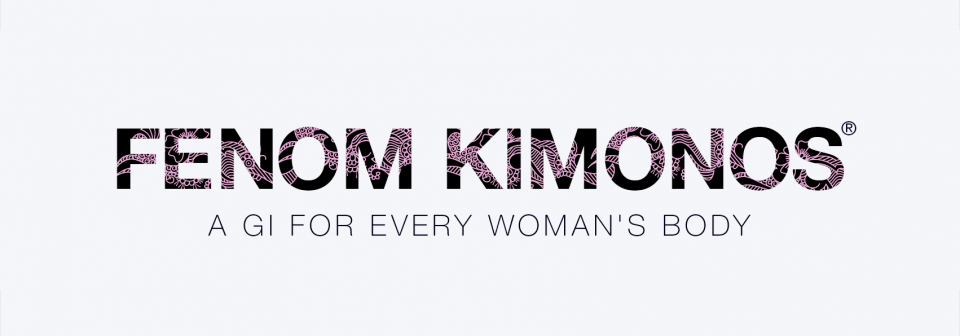Tags
bjj gi, brushed baby canvas, chess weave, cotton canvas, diamond weave, double weave, fenom kimonos, judo gi, plain weave, sashiko weave, single weave, single weave vs double weave gis, women's bjj
Our article, Gi Weaves 101, has become one of the most viewed blog post and continues to be a great resource for anyone in the market for a new women’s BJJ gi. Since we get a lot of questions about single weave and double weave gis, we decided to do a write-up about new fabrics we are using; what single weave and double weave fabrics are, and how to tell the difference between those two.
SASHIKO WEAVE or RICE GRAIN WEAVE is the most commonly misnamed fabric by jiu-jitsu bloggers and gi reviewers. A great deal of sources call it a single weave. Sashiko weave can be single or double weave. As a matter of fact, any fabric can be single or double weave, depending on if there is only one layer of fabric or if there are two layers of fabric that are interconnected. In a single weave fabric a set of weft (horizontal yarn) and a set of warp (vertical yarn) are interlaced together in different patterns. The pattern of the warp and weft is called the weave of the fabric. In a double weave, a fabric should contain two detectable weave structures, two layers, which are connected to one another in some way. Below are some photos to illustrate the difference between single and double weave.
Sashiko weave has been used for judo gis for decades, it’s readily available and much more reasonably priced than pearl weave. It can be light weight 350-550 gsm single weave to 750-950 gsm double weave, the options are endless. A lot of jiu-jitsu gis in sashiko weave are in light weight category, very affordable and considered a good starter gi. However, cheaper gis shrink quite a bit, so sizing can be tricky.
More expensive double weave gis have controlled shrinkage due to extensive pre-treatment but those are not common in BJJ scene. Double weave gi sleeves are very difficult to grab, they are thick and rigid. The whole gi set weighs twice as much as a single weave gi. Most BJJ hobbyists don’t ever experience a double weave gi unless they cross train at a judo dojo and get their grips on an International Judo Federation approved competition gi. So, if you are buying a jiu-jitsu gi and the description is 350-550 gsm weave (pearl or any others), you are getting a single weave gi.
CHESS WEAVE combines plain weave with Sashiko weave to form a chess board look. Plain weave is the most common and basic weave where weft yarn passes over and under warp yarn alternately. Chess weave fabric feels softer than pearl weave but not as soft as crystal weave. It feels light-weight and does not stretch out excessively. It is a great addition to any gi collection if you are getting bored with pearl weave. Colored gis in chess weave will look more textured and dramatic after a while as the raised squares fade at a different rate than the flat squares. This is not better than any other fabric; it simply has a captivating look.
DIAMOND WEAVE or diamond pattern Sashiko weave fabric is widely used in judo and is not new in the market. It is mostly used for the skirt part of the judo gi but can be made into a BJJ gi. The lightweight but sturdy plain weave or twill weave is combined with diamond pattern in Sashiko weave. Sashiko yarn direction is horizontal which makes the fabric stronger to withstand the stretching and pulling. The fabric feels light and airy, does not shrink excessively and is comfortable on skin. It has a unique textured look that should become popular in jiu-jitsu because of its affordability and availability.
Canvas or Cotton Duck is a popular fabric choise for workwear, tote bags, beach umbrellas, awnings and is the base for the best oil paintings. It is a plain woven fabric that is sturdy, dense and extremely durable. Cotton duck or duck is the correct name for the fabric but people outside of textile industry call it canvas. Canvas, especially heavy-duty canvas, is not a popular choice for gi pants. The fabric is very stiff and full length, double layer reinforcement makes the pants twice as heavy as rip stop pants. The pants will last for years if you have the patience to wear them and put up with the stiff, slightly uncomfortable fabric. Canvas will soften up a little over time but it will never be as comfortable as cotton drill. Customers have very strong feelings about these pants; they are serious nail rippers, you cannot get a grip without hurting your hands.
Brushed canvas looks just like canvas but feels like cotton drill. The fabric has been treated and brushed on both sides so the stiffness you experience with canvas has been eliminated. The best way to describe the feel of this fabric is to think of a flannel shirt, it’s that comfy. Of all the fabric choices for pants, this has to be our new favorite. Brushed canvas is comfortable but does not stretch out as much as cotton drill, very soft yet sturdy and there is no unexpected shrinkage. So far it has been very well received by customers and we hope to add more brushed canvas pants in different colors to our product line.
No matter what fabric you prefer, it is important to take good care of your gi . Read more about gi care and stain removal here.










Pingback: June 18, 2018 - BJJ News
Pingback: Gi Weaves 101 | BJJ For Women
Pingback: Fenom Tropical Flowers Gi | BJJ For Women
Pingback: Biggest Jiu-Jitsu Myths | BJJ For Women